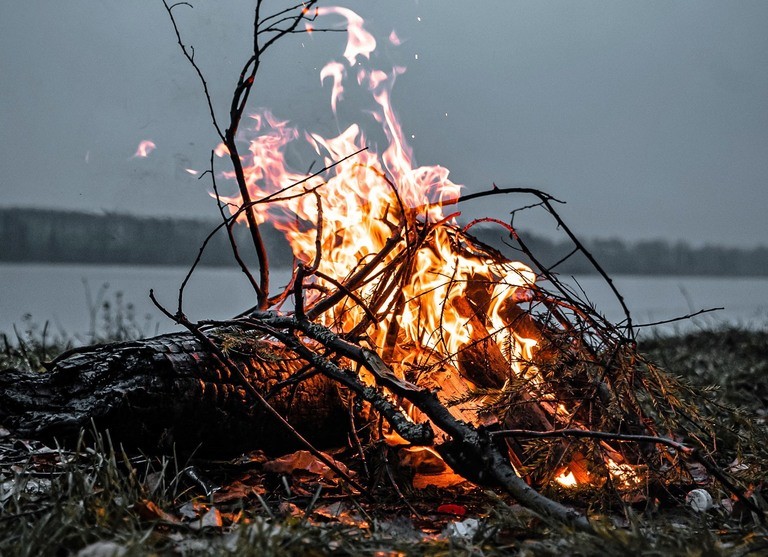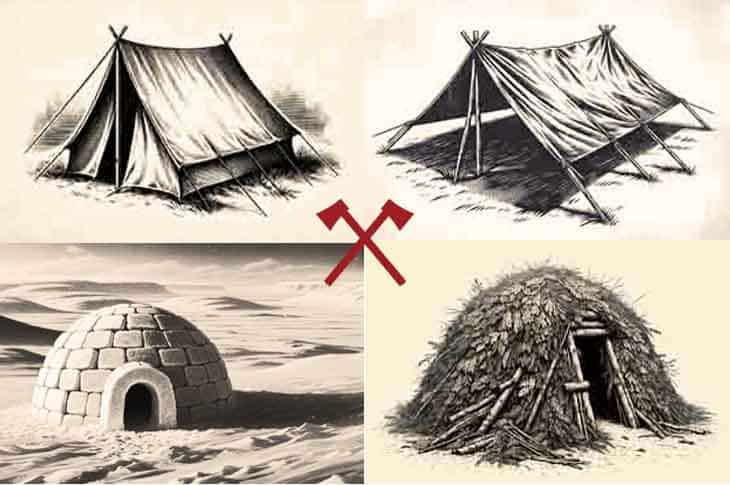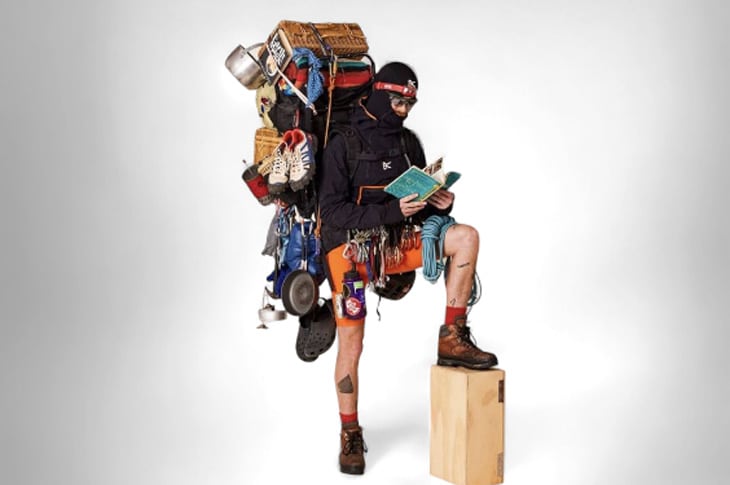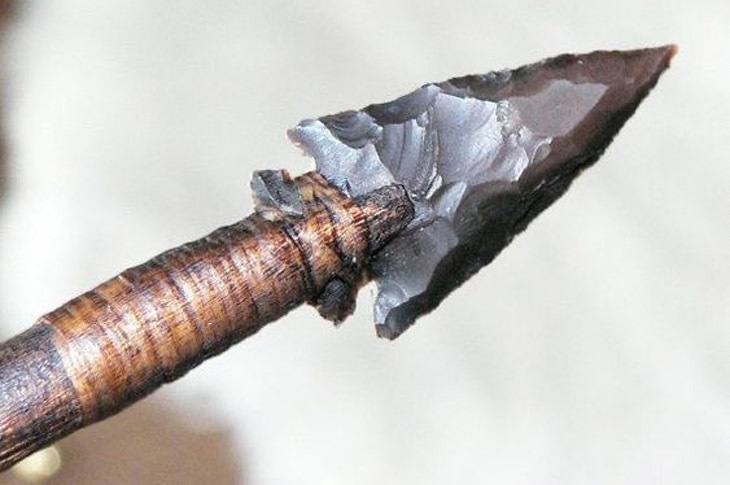Top 10 Long Term Survival Skills for a Lifetime of Self-Reliance
From building shelter to purifying water, mastering long term survival skills is essential for anyone who wants to be self-sufficient and prepared for anything.

Long term survival skills are the backbone of any self-reliant life. When resources are scarce and the environment is harsh, having the right skills can mean the difference between just surviving and thriving. It’s no surprise that long term survival is often associated with off-grid living, homesteading, and even primitive living. And it’s closely related to wilderness survival skills, and even has the same basic skills as urban survival skills.
But no matter what your lifestyle may be, mastering these essential skills is a must. In this guide, we’ll cover the top 10 long term survival skills that you need to know to live sustainably and safely, no matter what challenges come your way. So whether you’re a seasoned survivalist or just starting on your journey towards self-reliance, let’s dive in and explore these critical skills together.
Table of Contents

Water Collection and Purification
When it comes to long term survival skills, knowing how to collect and purify water is absolutely essential. After all, we can only survive for a few days without it. In this section, we’ll cover the top five techniques for water collection and purification, so that you can stay hydrated in even the most challenging of circumstances.
Natural Water Sources
Natural water sources, such as rivers and lakes, are often our go-to when we need water. However, it’s important to remember that this water may not be safe to drink. Bacteria and parasites can make you seriously ill, and in some cases, even lead to death. That’s why it’s important to learn how to purify water from natural sources.
Water Filtration Systems
Water filtration systems are a great way to do this. They work by removing impurities from the water, such as dirt, debris, and bacteria. You can purchase portable water filters that are lightweight and easy to carry, making them a great option for when you’re on the move.
Solar Water Distillation
Solar water distillation is another effective way to purify water. This method involves using the sun’s energy to evaporate water, which is then collected and condensed into a separate container. While it takes time and effort to set up, it can be a great option in areas where there is a lot of sunlight and no other sources of clean water.
Rainwater Collection and Purification
Rainwater collection and purification is another effective way to collect water. You can set up a simple system to collect rainwater in buckets, and then purify it using a filtration system or boiling it. This is a great option for those living off-grid or in remote areas where there are no other sources of clean water.
Emergency Water Purification Techniques
Finally, emergency water purification techniques are essential for when you don’t have access to any of the above options. These techniques, such as boiling and chemical treatment, are designed to kill bacteria and other harmful substances in the water. While they may not be as effective as other methods, they can be lifesaving in an emergency.
Food Procurement and Preservation
While it may seem daunting to rely solely on what nature provides, there are several techniques you can master to ensure a steady food supply.
Hunting and Trapping Techniques
Hunting and trapping can be effective ways to procure meat in the wild. However, it requires skill and patience. Before you head out, make sure you know the laws and regulations for hunting and trapping in your area. Research the habits of your target animals and learn how to set traps that will effectively capture them. It’s also essential to know how to clean and prepare your catch.
Foraging for Edible Plants
Foraging for edible plants is another useful skill that can provide you with a variety of nutrients. The key is to learn how to identify edible plants and distinguish them from poisonous ones. Invest in a good field guide or take a class to learn the basics. Be sure to also learn about the different parts of plants that are edible and how to prepare them.
Fishing and Aquaculture
These are excellent ways to procure protein-rich food. If you’re near a body of water, fishing can provide you with a steady supply of fish. Learn how to use different fishing techniques and equipment, and be aware of local fishing regulations. If you have the space, you can also set up a small aquaculture system to raise fish or other aquatic animals.
Basic gardening skills
Basic gardening skills can provide you with a variety of fresh fruits and vegetables. Even if you have limited space, you can grow a small garden in containers or on a windowsill. Learn about the different types of soil and how to fertilize and water your plants. It’s also important to know which plants grow best in your climate and how to protect them from pests and diseases.
Building and maintaining a greenhouse
This may seem like a luxury, but so worth it. If you build and maintain a greenhouse, it can extend your growing season and allow you to grow a wider variety of crops. Greenhouses can also protect your plants from extreme weather conditions and pests. There are many types of greenhouses to choose from, including DIY options, and learning how to build and maintain one can be a valuable piece of your long term survival skills.
Food Preservation Methods
Learning how to can, dehydrate, smoke, or ferment your food can extend its shelf life and provide you with a variety of flavors. However, it’s important to learn proper food safety techniques to prevent spoilage or contamination.
Creating a Sustainable Food Source
Creating a sustainable food source through agriculture and raising domesticated animals is a long-term goal that requires planning and preparation. If you have enough land, consider setting up a small farm to raise crops and animals for food. It’s important to learn about animal husbandry, crop rotation, and soil conservation to maintain a sustainable farm.

Shelter Building and Maintenance
Your shelter is your first line of defense against the elements. So, it’s essential to choose the right location for your shelter.
Choosing the Right Location
You’ll want to find a spot that’s relatively flat and dry, with natural barriers like trees and rocks to provide extra protection from the wind.
Shelter Design and Building Techniques
When it comes to building a long-term shelter, you’ll want to consider more advanced techniques like using natural materials such as logs, stone, and mud to build a sturdy structure. These materials are not only strong but can also provide better insulation than modern materials, making your shelter more energy-efficient.
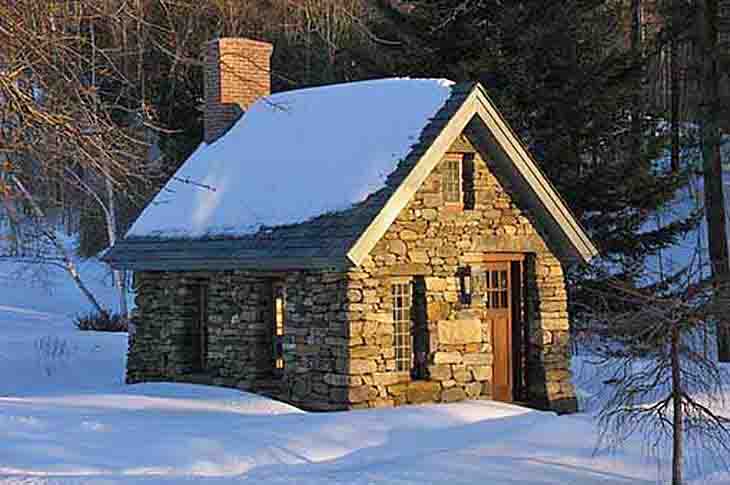
Shelter Maintenance
Of course, maintaining your shelter is just as important as building it. You’ll want to regularly inspect your shelter for damage and make any necessary repairs. You should also keep your shelter clean and organized to prevent the buildup of debris and pests.
Emergency Shelter Building
But what if you need to build an emergency shelter quickly? In that case, you’ll want to focus on simple, lightweight designs that can be assembled quickly. Basic shelters like lean-tos, debris huts, and tarp shelters are easy to construct and can provide adequate protection in a pinch.
Remember, your shelter is your home in the wild. So take the time to choose the right location, use the right materials, and maintain it properly, and you’ll be on your way to a safe and comfortable survival experience.
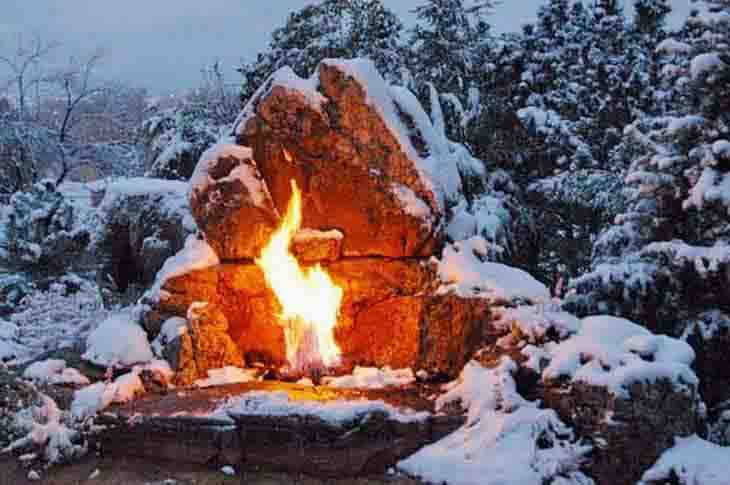
Long Term Survival Skills: Fire Starting
Fire is a critical aspect of survival. It keeps us warm, cooks our food, and gives us light in the dark. So, let’s get to it and learn some fire starting techniques.
Fire Starting Techniques
Firstly, a fire starter is a must-have in your survival kit. The good ol’ match sticks are always a reliable choice. However, you might want to consider carrying some waterproof matches or lighters in case it rains.
Another item to add to your survival fire starting kit is a ferrocerium rod. It’s a handy tool that creates sparks when scraped with a metal edge. Make sure you practice using it before you go out into the wild.
If you can’t find matches or a ferrocerium rod, you can always start a fire the primitive way, using a fire plow or hand drill. It might be more challenging, but it’s always good to have some extra knowledge up your sleeve. See a detailed look at how to start a fire.
Building a Fire Pit
Once you’ve got a fire going, the next step is building a fire pit. A fire pit helps keep your fire contained and reduces the risk of starting a forest fire. Plus, it’s an excellent way to keep your campsite clean.
When building a fire pit, make sure it’s away from any low-hanging branches or dry grass. Clear out any debris or dry leaves around the area. Then, dig a shallow pit and surround it with rocks. This will keep the fire contained and help reflect the heat.
Fire Safety
Fire safety is a critical aspect of fire starting and maintenance. Never leave your fire unattended, and always keep water close by in case the fire gets out of hand. Make sure the fire is completely out before you leave the area.
Maintaining a Fire
Lastly, maintaining a fire is just as important as starting one. Keep feeding it with small branches and logs to keep it going. Always be mindful of the size of your fire and adjust it accordingly to your needs.

Navigation and Signaling
You can have all the survival skills in the world, but they won’t help you much if you don’t know where you’re going or how to communicate with others.
Navigation Techniques
One of the most important tools for navigation is a map and compass. It may sound old-fashioned, but trust me, they can be lifesavers. Before you head out on your adventure, make sure you have a detailed topographic map of the area and a reliable compass. A GPS can be helpful too, but electronics can fail or run out of battery, so always have a backup plan.
Map and Compass Reading
Learning how to read a map and compass takes practice, but it’s a valuable skill to have. Take some time to study the map and terrain before setting out. Look for prominent landmarks such as mountains, rivers, or rock formations that you can use to orient yourself.
Finding your way using natural landmarks
If you don’t have a map or a compass, don’t panic. You can still find your way using natural landmarks. The sun, moon, and stars are excellent navigational aids. You can also use topographical markers like distant hills and the flow of a river to determine direction.
Signaling for Help
Signaling for help is crucial if you get lost or injured. Three of anything is the universal distress signal, so if you’re in trouble, create a signal using rocks, logs, or any other material you can find. A bright fire, whistle, or mirror flash can also help rescuers locate you.
Remember to stay calm, take deep breaths, and assess the situation before taking any action. Navigation and signaling skills can make a huge difference in a survival situation. So, practice these skills whenever you can and keep honing them.

Long Term Survival Skills: First Aid
If you’re planning for the long haul, then you gotta start thinking about how you’re gonna take care of yourself when the going gets tough. That means preparing for the worst and hoping for the best. In other words, you need to be ready for anything. Here’s what you need to know about first aid and health maintenance for long term survival.
Basic First Aid Techniques
Basic first aid techniques are essential. You need to know how to treat cuts, scrapes, bruises, and burns. You should also know how to identify and treat more serious injuries like broken bones, sprains, and dislocations. The key is to stay calm, assess the situation, and take action quickly. If you’re not sure what to do, don’t be afraid to ask for help.
Essential Medical Supplies
When it comes to essential medical supplies, you’ll need the best first aid kit for survival. This should include bandages, gauze, tape, antiseptic solution, and pain relievers. You should also have a supply of any prescription medications you need. Don’t forget to check your kit regularly and replace anything that’s expired or used up.
Common Health Issues in Survival Situations
Common health issues in survival situations include dehydration, malnutrition, and exposure to the elements. To prevent these issues, make sure you have a good supply of clean water, nutritious food, and warm clothing. Don’t forget to protect yourself from the sun and keep yourself clean and dry.
Preventing Illness and Injury
This is critical for long term survival. That means taking care of yourself and avoiding unnecessary risks. Don’t push yourself too hard and avoid dangerous activities. You should also practice good hygiene to prevent the spread of germs.
CPR and other life-saving techniques
CPR and other life-saving techniques can mean the difference between life and death. You should know how to perform CPR and use an AED. You should also know how to deal with choking and other emergency situations. If you’re not sure how to do these things, take a class or get some training.
Natural remedies
Natural remedies can be a helpful supplement to traditional first aid. Some common remedies include aloe vera for burns, honey for wound healing, and tea tree oil for infections. However, be careful and only use remedies that have been thoroughly researched and proven effective.
Mental Preparedness
Mental preparedness is just as important as physical preparedness. Having the right mindset can make all the difference when you’re facing difficult situations. So, let’s talk about what it means to have a long term survival mindset and how you can develop one.
Long Term Survival Skills: Mindset
First of all, self-reliance is key. You need to be able to rely on yourself in any situation. That means being prepared with the right skills, knowledge, and equipment. But it also means being mentally prepared to face whatever comes your way. You need to be confident in your abilities and be willing to take on any challenge.
Situational Awareness
Situational awareness is another important aspect of mental preparedness. You need to be aware of your surroundings at all times and be able to quickly assess any potential threats or dangers. This will help you to make the right decisions and stay safe in any situation.
Mental Toughness
But even with the best situational awareness, you’re still going to face challenges that will test your mental toughness. So, how do you develop mental toughness? One way is to practice resilience and adaptability. Being able to bounce back from setbacks and adjust to changing circumstances will help you to stay strong in the face of adversity.
Cope with Isolation
Coping with isolation is another important aspect of mental preparedness. When you’re in a long term survival situation, you may be alone or with a small group of people for a long period of time. This can be incredibly challenging, both mentally and emotionally. It’s important to have strategies in place to help you cope with isolation and maintain a positive attitude.
Overcoming Fear and Anxiety
Fear and anxiety can also be major challenges in a long term survival situation. It’s natural to feel afraid in uncertain or dangerous situations. But it’s important to learn how to manage your fear and keep it from overwhelming you. There are many techniques you can use, such as visualization, deep breathing, and positive self-talk, to help you stay calm and focused in the face of fear.
By developing a strong and resilient mindset, you’ll be better equipped to face any challenge that comes your way. Remember to focus on self-reliance, situational awareness, mental toughness, resilience and adaptability, coping with isolation, and overcoming fear and anxiety.

Security and Defense Skills
You need to be prepared to protect yourself and your family in any situation. It’s a key part of your long term survival skills. Let’s start with basic self-defense techniques.
Self-Defense Techniques
First of all, always be aware of your surroundings and avoid putting yourself in potentially dangerous situations. If you do find yourself in a physical confrontation, remember to stay calm and focused, and use your body as a weapon. Techniques such as punching, kicking, and grappling can be effective if used correctly.
Use of Weapons for Self-Defense
Weapons can also be useful for self-defense, but they should only be used as a last resort. Make sure you are properly trained in the use of any weapons you choose to carry, and always follow all safety rules.
Secure Perimeter
Creating a secure perimeter around your shelter or homestead is an important step in defending your territory. You can use natural barriers such as thorny bushes or walls made of rocks to make it more difficult for intruders to enter. Building a fence or a wall around your property is also a good option.
Basic Defensive Structures and Tactics
Defensive structures such as bunkers or hidden rooms can be extremely useful in times of danger. Make sure these structures are well-hidden and reinforced to withstand any attacks. Additionally, consider tactics such as setting up tripwires or other booby traps to deter intruders.
Remember, the key to effective security and defense is to be proactive, not reactive. Stay alert and aware of your surroundings, and always have a plan in place for any potential threats.
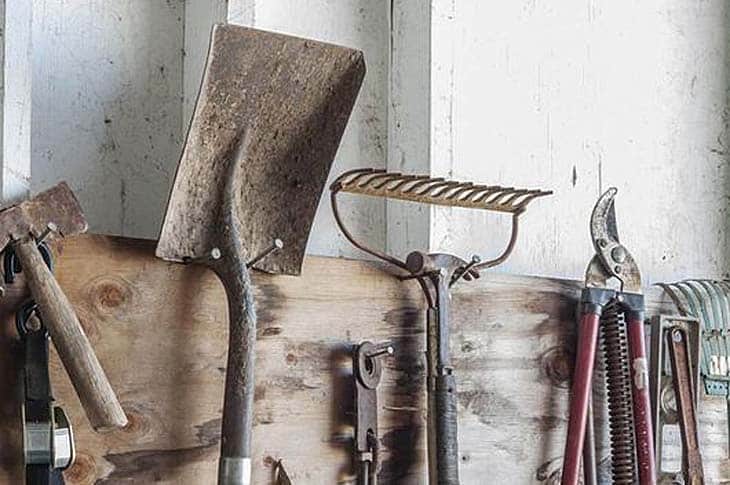
Gear and Tools
The right tools make it a hell of a lot easier to build shelter, make fire, and procure food and water. The gear you choose will depend on the environment you’re in, the length of your stay, and your skill level.
Choosing The Essential Gear for Long Term Survival
One important thing to consider is weight. You don’t want to be carrying around more than you can handle. Choose gear that is light and durable. You also want to make sure you have redundancy in your gear. Have backups for essential items like fire starters and water filtration systems.
Tools for Tool Making
In terms of tools, it’s important to know how to make your own tools. Basic tool-making techniques can be learned and will come in handy when your gear inevitably breaks or becomes lost. Improvised tools can be made from natural materials, like stone, wood, or bone.
Making A Long Term Survival Gear List
When making a long term survival gear list, consider the following items:
- A good quality knife
- A reliable fire starter, like waterproof matches or a ferrocerium rod (survival fire starting kit)
- A water filtration system or water purification tablets
- A shelter, like a tent or tarp, along with a sleeping bag and sleeping pad
- A backpack to carry your gear
- Appropriate clothing for the climate
- Navigation tools, like a compass and map
- Best campfire cooking kits, – cooking utensils, like a pot, pan, and utensils
- Best first aid kit for survival
- Gardening and work tools – rake, hoe and shovel (best survival shovels)
This is just a basic list. You can add or subtract items based on your personal needs and the environment you’ll be in.
Make sure you have lightweight, redundant gear that will meet your basic needs. Also, learn basic tool-making techniques so you can make your own tools when necessary. And always make a gear list, so you don’t forget any essentials.
Electricity
Who doesn’t love the convenience of flicking a switch and seeing the lights turn on? But what happens when you’re out in the wilderness, away from all those fancy plugs and sockets? Don’t worry, you can generate your own electricity and keep those batteries charged.
Generating Electricity When You’re Off The Grid
First things first: generating electricity. There are a variety of methods you can use to generate your own power when you’re off the grid. Solar panels are a popular choice, as they’re relatively easy to set up and require little maintenance. Just make sure you have enough panels to power your needs, and that you have a way to store any excess energy for later use.
Wind turbines are another option, but they can be tricky to set up and require a steady supply of wind. If you’re in an area with inconsistent wind patterns, you might want to look elsewhere for power.
Hydroelectric power is a great option if you’re near a flowing river or stream. You can build your own small-scale hydroelectric generator using a water wheel and a generator, and have a reliable source of power as long as the water keeps flowing.
Storing Electrical Power
Now, onto storing electrical power. You’ll want to have a good battery bank to store any excess power you generate, so you can use it when the sun isn’t shining, the wind isn’t blowing, or the water isn’t flowing. You can use deep-cycle batteries, which are designed to be discharged and recharged over and over again, or you can look into other options like capacitors or flywheels.
Of course, you’ll need to be careful when working with electricity. Make sure you have the proper safety equipment, and don’t attempt any electrical work if you’re not comfortable or confident in your abilities.
And remember: just because you’re generating your own power doesn’t mean you’re immune to power outages. Always have a backup plan for when things don’t go as planned.
A Few Final Words
There you have it. The top 10 long term survival skills you need for a lifetime of self-reliance. It’s not for the faint of heart, but if you’ve got what it takes to survive off the grid and take care of yourself, then these skills are essential.
From finding your way using natural landmarks to creating a secure perimeter around your shelter or homestead, there’s a lot to learn. And let’s not forget the importance of mental preparedness, basic first aid, and knowing how to generate and store electricity.
So, get out there and start practicing these skills. Who knows, one day you might find yourself in a real-life survival situation and these skills could save your life.






